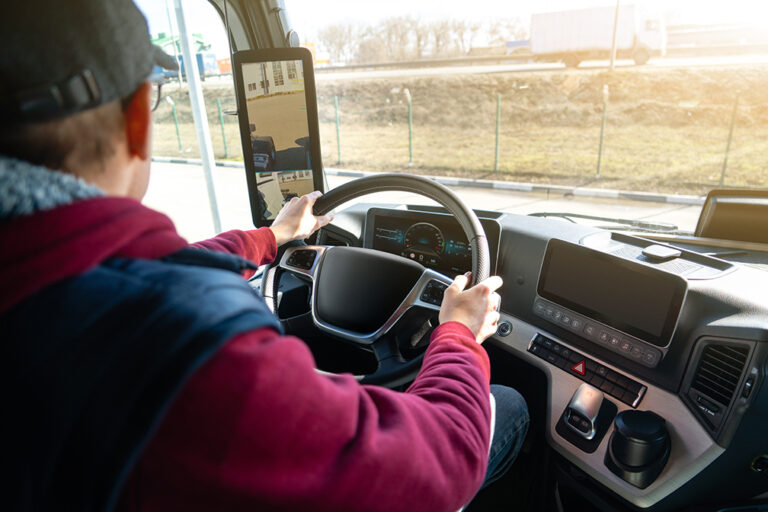Every driver knows the importance of looking ahead. Most defensive driving courses advise knowing what’s happening as far ahead as possible so you can see and identify potential hazards while you still have enough room — and time — to react to them.
The best drivers understand the importance of knowing what’s going on all around their vehicles, including the rear, the sides and even above and below.
It’s tempting to forget about the traffic behind you. After all, you can’t do much about hazards you’re already driving away from. However, traffic to the rear has a pesky way of passing along the side and relocating to the front. While you can’t always predict what another motorist will do, you can observe driving behavior and be prepared.
For example, you might see a particular car weaving in and out of traffic, trying to get past slower vehicles. It’s a good bet that car will soon be passing you — and it may very well end up cutting right in front of you to avoid another vehicle. You can’t stop the other driver’s behavior, but you can be ready.
Some drivers don’t worry about that vehicle behind them that’s following too closely, reasoning that if there’s a collision at the rear of the trailer, it’s the other driver’s fault anyway. While this may be true, you’ll still have an accident report to deal with and potential damage to your trailer and cargo to sort out — not to mention loss of earnings while you sort it all out. You might also have the guilt of knowing someone was injured (or worse) in a collision with your truck. Drivers who have experienced this scenario know that even if you aren’t at fault in the accident, the memories stay around for a long time.
Keep in mind that the tailgater behind you may be someone whose judgment is impaired by alcohol or drugs. Or it could be someone who’s distracted by texting or some other activity and isn’t paying attention to their driving. Easing up on the throttle and dropping just a few miles per hour can encourage the tailgater to pass you, putting the hazard they represent out in front, where you can more easily see it.
Your mirrors play an important role in showing what’s around your vehicle. If properly adjusted and used, you can identify vehicles that are passing on either side, but there’s more. You can sometimes identify driving behaviors that could result in a hazard.
For instance, it’s common to see people sending or receiving text messages. Every truck driver sees other motorists all day long with cellphones in their hands. Unfortunately, sometimes those other motorists are driving 18-wheelers.
Cellphones aren’t the only thing that can distract drivers. Moms are distracted by misbehaving children in back. Overly amorous couples just can’t wait until they stop somewhere. We’ve also heard tales of drivers with their feet on the dashboard, drivers reading a book or magazine, drivers watching a video or reading a map — or any of a thousand things they shouldn’t be doing.
When distracted drivers are behind you, their behavior may not be hazardous to you. Once they’re alongside your vehicle, however, your chances of being involved in an accident caused by their behavior go up.
These are only a few reasons that your truck’s mirrors are vital to knowing what’s around you. Keep them clean and adjust them so blind spots around your vehicle are minimized, if not eliminated. Just as you do when looking forward, use your mirrors to look near and far so you can identify as many hazards as possible.
Professional drivers know the importance of a continuous eye scan. They develop a habit of scanning from side to side, incorporating views from mirrors and windows along with dashboard displays and any other important information.
Some drivers prefer to time their eye movements, for example, performing a visual scan every 15 seconds or so. However, how often you scan and what you scan should change based on the current situation and the hazards you’re likely to encounter. For example, when approaching an intersection you’ll pay less attention to your gauges and more attention to vehicles approaching from either side or in front. If you’re turning, you’ll pay more attention to the mirror on the side you’re turning toward.
On a deserted highway at midnight, however, you might focus on watching for animals that could jump out in front of your vehicle. You may not need to scan the mirrors as often, since the headlights of any overtaking vehicles are easy to monitor.
When you’re climbing a tough grade and your engine is laboring, you might pay more attention than usual to your gauges, especially your temperature gauge.
Don’t ever entirely forget any portion of your eye scan, but you can adjust your focus to help you detect hazards that are most likely to occur.
When scanning your surroundings, don’t forget to “look and lean.” The area to the right of the cab is a notorious blind spot, especially near the steer tire. Trucks with traditional long hoods are more difficult to see around. By leaning to the right and physically looking at the space you can often see objects that may not show up in the mirror.
Also, remember that the spaces above and below your vehicle are important. Most of those areas are completely cut off from your vision, so it’s extremely important to consider objects ahead. Clearances for bridges are often marked, but not always. Awnings, tree limbs and other hazards may have no warning at all. Know the height of your vehicle and, if necessary, slow down or even stop before driving under an object you aren’t sure will clear.
Vehicles can be damaged by objects in the road and potholes, so avoid them if you can do it safely. Keep in mind that railroad crossings or other road features can hang up on your trailer’s landing gear and cause you to get stuck. Your tires can sink into soft ground, causing a rollover. Be aware of what’s below your vehicle.
By using all available tools and maintaining a continuous eye scan, you can identify hazards and help make sure they don’t involve you and your vehicle.
Cliff Abbott is an experienced commercial vehicle driver and owner-operator who still holds a CDL in his home state of Alabama. In nearly 40 years in trucking, he’s been an instructor and trainer and has managed safety and recruiting operations for several carriers. Having never lost his love of the road, Cliff has written a book and hundreds of songs and has been writing for The Trucker for more than a decade.








